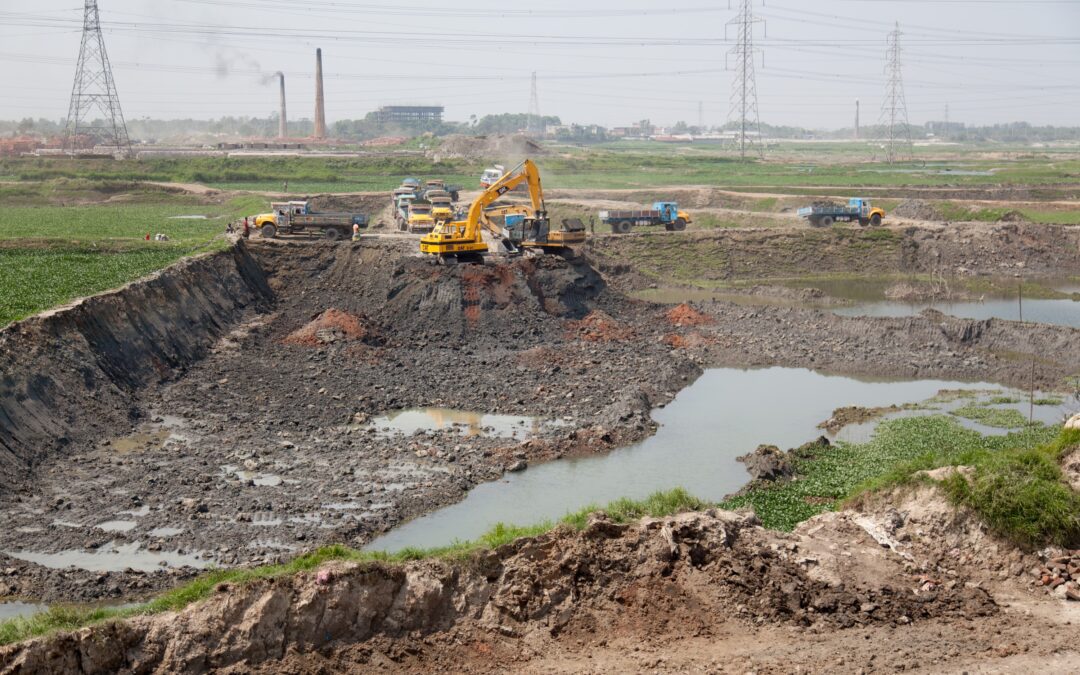Where there’s a will–and an adequate budget–there’s a way. However, regarding construction foundations, certain soils will require a lot more will, and a lot more budget, than others.
How Are Soils Classified?
Various professions need to work with and understand soil, from environmental engineers and geoscientists to archaeologists to farmers. So, there are numerous ways to classify soil. Different classification systems focus on various aspects of soil, such as parent material, cohesiveness, or strength. One simple way to understand soil types is by starting with three groups, differentiated by particle size: sand, silt, and clay. Of the three, sand is made up of the largest, size range of individual particles. Most common soil types are made up of some combination of sand, silt, and clay, and can be described by the presence or absence of these three groups. When embarking on a construction project, particle size and other attributes in your site’s soil result in varying advantages and challenges.
The Best and Worst Soils for Construction
Building foundations are most successful when constructed on soils that are strong and stable. Ideally, good soil for construction can endure the passage of time and weather events without shifting, expanding, or contracting. Let’s take a look at a few common soil types and their general suitability for construction sites.
Building on Loam
Loamy soil is generally dark in color, crumbly, dry, and soft. Loam has a mix of sand, silt, and clay that is usually well-suited for a building foundation. It handles wetting and drying without much expansion, shrinkage, or shifting. So, structures built on loamy soils are provided with stability and aren’t subject to dangerous sliding or sinking. Loam is generally considered an excellent soil type for construction.
Building on Silt
Silty soil consists of fairly small particles, smaller than sand. The greater surface area relative to volume can result in long-lasting water retention. This in turn may causes silty soil to expand and shift. This lack of stability means that structures on silty soil are subject to repeated and prolonged stress, potentially resulting in structural damages.
Building on Clay
Clay particles are even smaller than silt. Depending on the mineral composition of a particular soil, clay is expensive. That means that it significantly expands when wet and shrinks when dry. These fluctuations are usually unsuitable for a building foundation. Structures on clay soils can shift up and down as the soil expands and shrinks. This can cause cracks and other problems that may lead to structural failure.
Construction Projects and Soil
Clay is typically not a good soil on which to place a building foundation. It may even be the worst soil type to build on. In practice, it is seldom that simple–construction sites contain varying mixes of soil types, as well as many other factors that make the ground better or worse to build on. Soil science is complex. However, even if it’s not your area of expertise, it’s helpful to understand a few basic concepts, such as particle size and expansion/contraction. Any professional whose work relates to the construction industry should be familiar with these topics. That way, you’ll have a general understanding of the soil factors that determine a site’s suitability for building on.
About LCA Environmental
Managing the environment is what we do at LCA. We are an award-winning engineering firm with expertise in geology, engineering, and remediation. LCA can help you manage business environmental risks in a straightforward, comprehensible way. With 30 years of experience, we provide environmentally friendly services that include site assessment, remediation, geoscience, and design and construction management. We also provide consulting services for waste management, environmental impacts, petroleum fuel storage and dispensing systems, water management, green infrastructure design and more. Contact us to learn how we solve environmental problems with engineering solutions www.lcaenvironmental.com.


